Are you looking to navigate the often complex world of housing rental agreements? Crafting a clear and comprehensive rental agreement is essential to ensure both landlords and tenants understand their rights and responsibilities. In this article, we'll break down the key terms that should be included in your housing rental agreement, helping you avoid common pitfalls and misunderstandings. So, let's dive in and explore the essential components that will protect both parties in a rental situation!
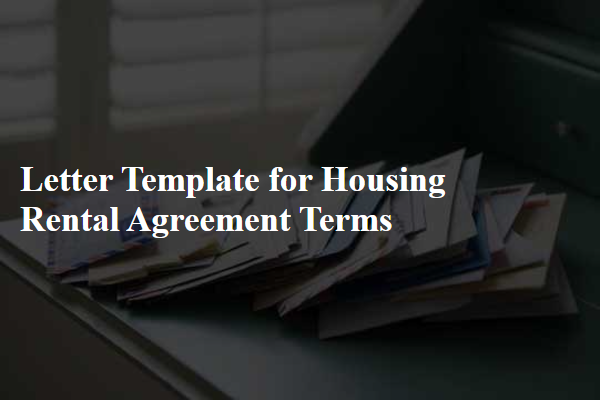
Rent Payment Details
The rental agreement specifies critical elements regarding rent payment terms. Monthly rent amount, noted as $1,500, is due on the first of every month. Accepted payment methods include bank transfer, certified check, or money order. A late fee of $100 applies if payment is not received within a five-day grace period, emphasizing timeliness. Security deposit, equal to one month's rent, is required prior to move-in, ensuring property protection. Furthermore, the agreement includes a provision for rent increases, allowing a maximum increase of 5% annually, with written notice at least thirty days in advance to the tenant, maintaining transparency in financial expectations.
Lease Duration
A rental agreement typically outlines the lease duration, stating the specific timeframe which the tenant agrees to occupy the property, typically ranging from a minimum of six months to a maximum of 12 months or longer, depending on landlord preferences. The start date (e.g., October 1, 2023) is crucial, as it marks the commencement of the lease, while the end date (e.g., September 30, 2024) establishes when the tenant must vacate unless a renewal is agreed upon. Additionally, the agreement may include clauses regarding options for early termination and renewal terms, outlining any penalties or procedures that must be followed should the tenant leave before the lease concludes. Both parties must acknowledge the importance of adhering to these timelines to ensure mutual understanding and legal compliance.
Security Deposit Terms
A security deposit is a crucial component in housing rental agreements, typically amounting to one month's rent, which landlords (property owners) require from tenants (residents) prior to moving in. This deposit serves as financial protection against potential damages or unpaid rent during the lease period, often detailed in the agreement. For instance, in regions like California, landlords must return security deposits within 21 days after the tenant vacates the property, minus any deductions for repairs (beyond normal wear and tear) or unpaid rent. Additionally, landlords must provide an itemized statement outlining any deductions, thereby ensuring transparency and clarity in financial transactions. Regular enforcement of these security deposit regulations helps both parties, fostering trust and accountability in the rental process.
Maintenance Responsibilities
Rental agreements typically stipulate the maintenance responsibilities of both landlords and tenants to ensure the property remains in good condition. The landlord is generally responsible for major repairs, including plumbing issues (such as leaks in the pipes), electrical problems (like faulty wiring), and significant appliance repairs (for instance, malfunctioning refrigerators). Routine maintenance tasks, such as changing light bulbs, replacing air filters in HVAC systems, and keeping the premises clean, often fall under the tenant's purview. Tenants must promptly report any maintenance issues to facilitate timely repairs, which can include notifying the landlord of water damage or pest infestations. Clear communication between both parties regarding maintenance expectations is crucial to prevent disputes during the rental period, which can last several months to years depending on the lease agreement.
Termination Conditions
Termination conditions in a housing rental agreement are critical for defining the circumstances under which either the landlord or tenant may end the lease. Conditions typically include notice periods, often 30 days, detailing how written notices must be delivered, whether via certified mail or in person. Specific scenarios warranting termination, such as non-payment of rent exceeding 5 days or violation of lease terms, are outlined to protect both parties' rights. Additionally, the condition of the property upon termination should be specified, including required cleaning and repairs to avoid deductions from the security deposit. Local laws, such as those in New York City, may also impose specific regulations governing evictions and tenant rights, which must be acknowledged and integrated into the agreement.

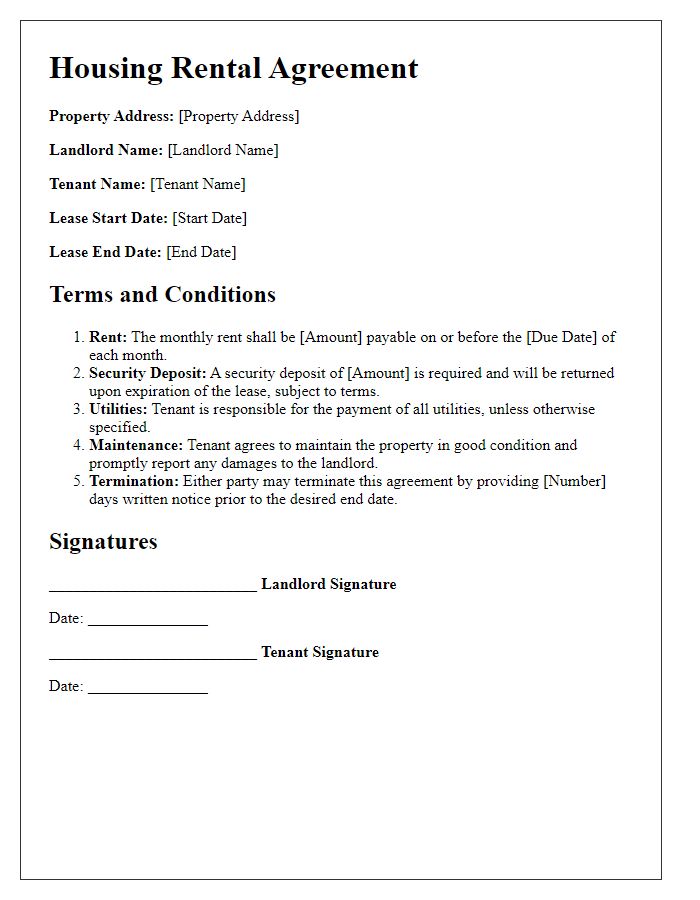

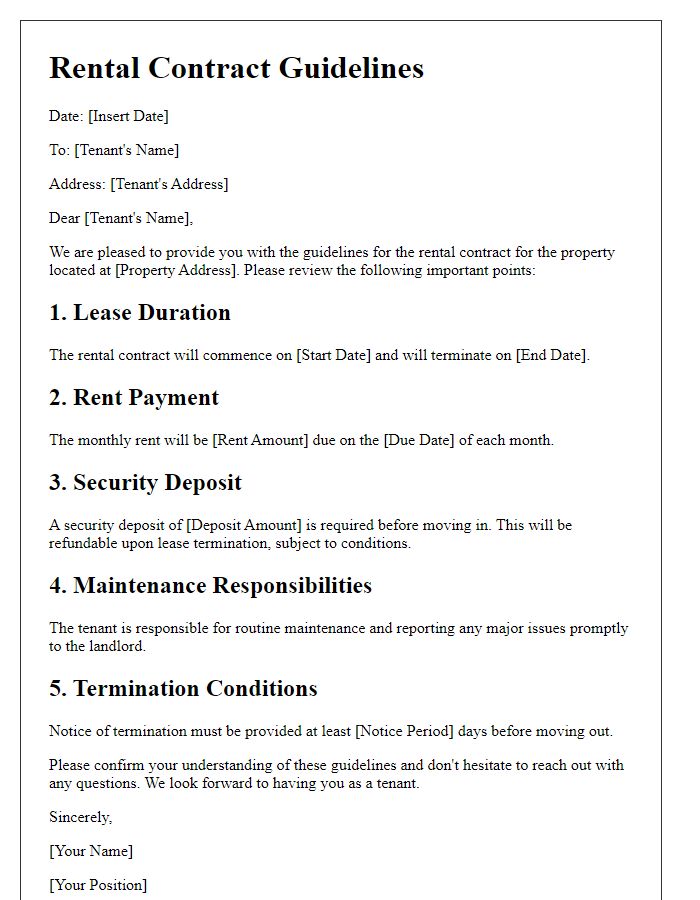
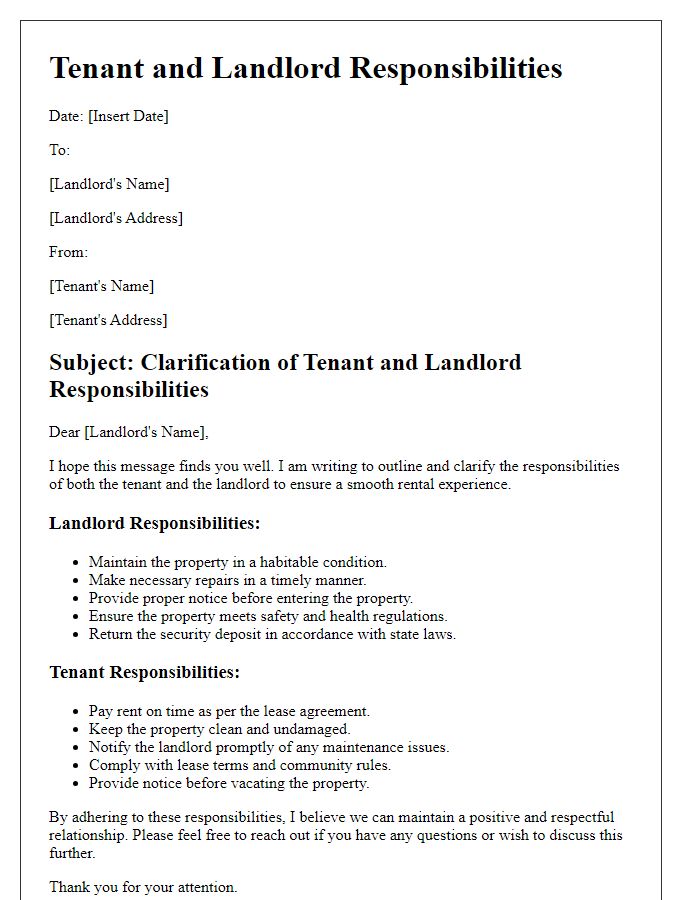
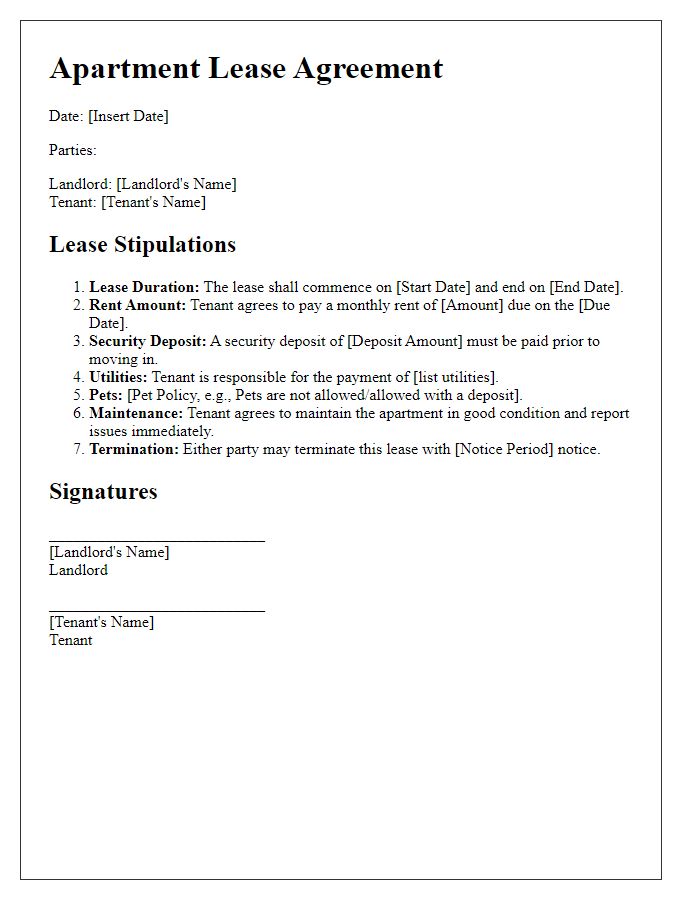
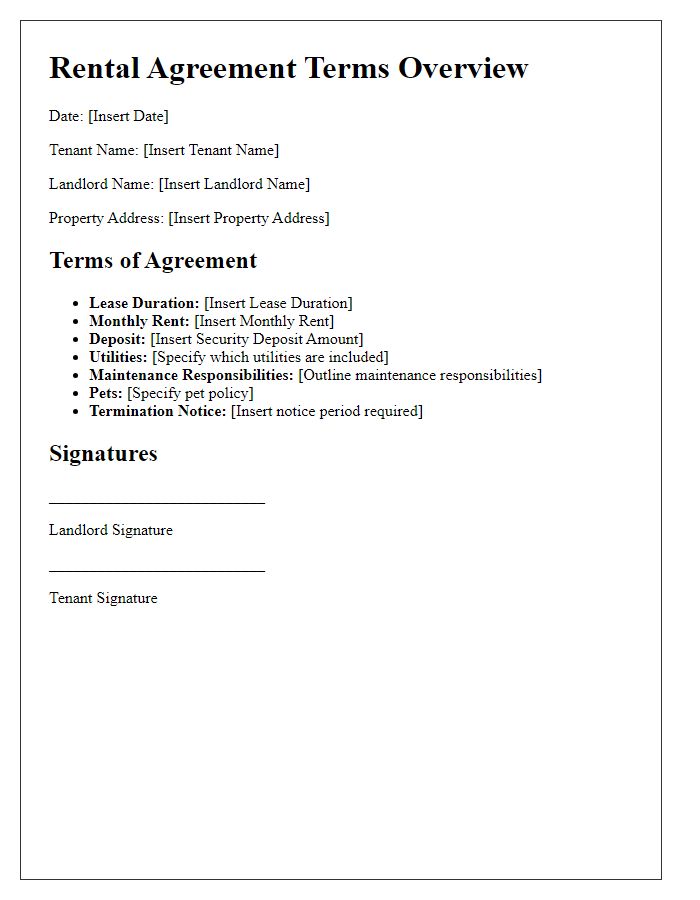
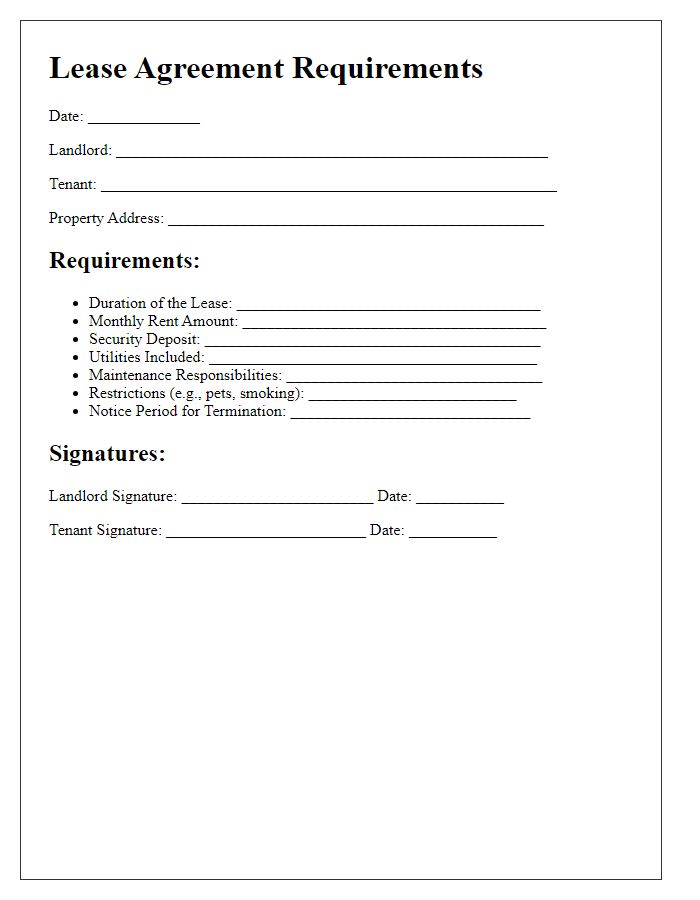
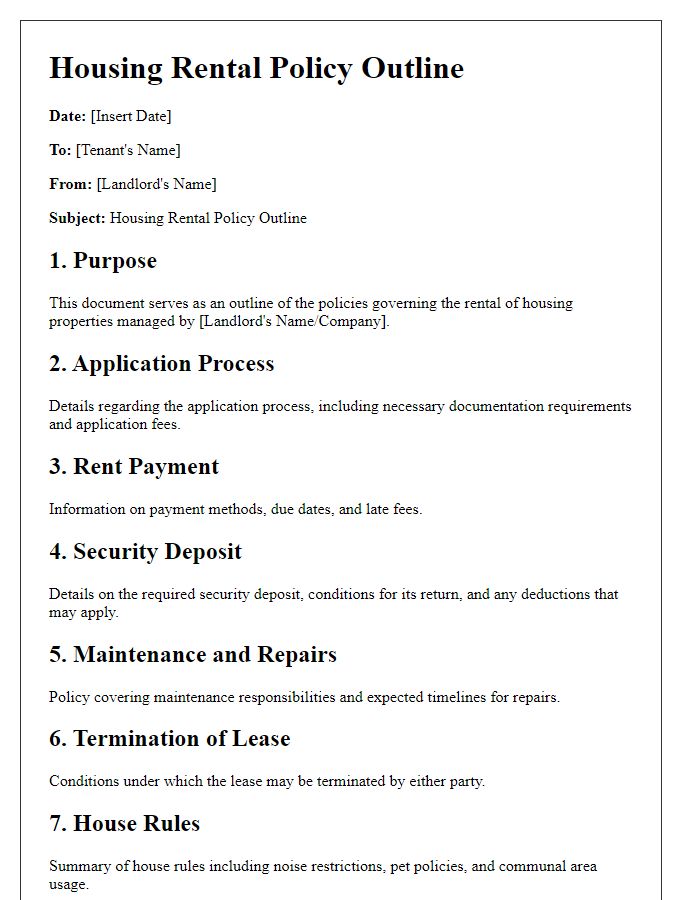
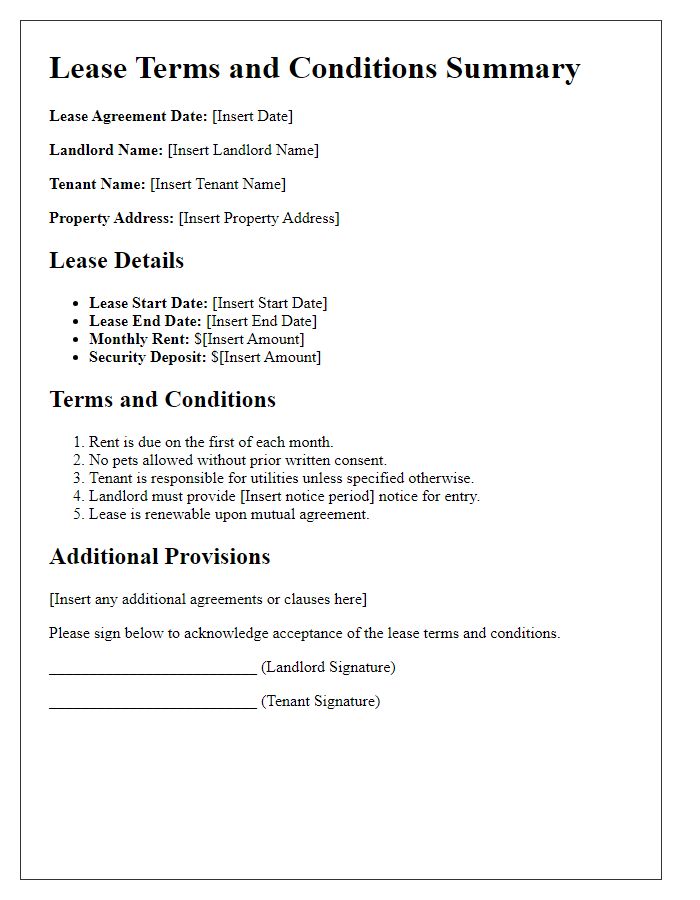
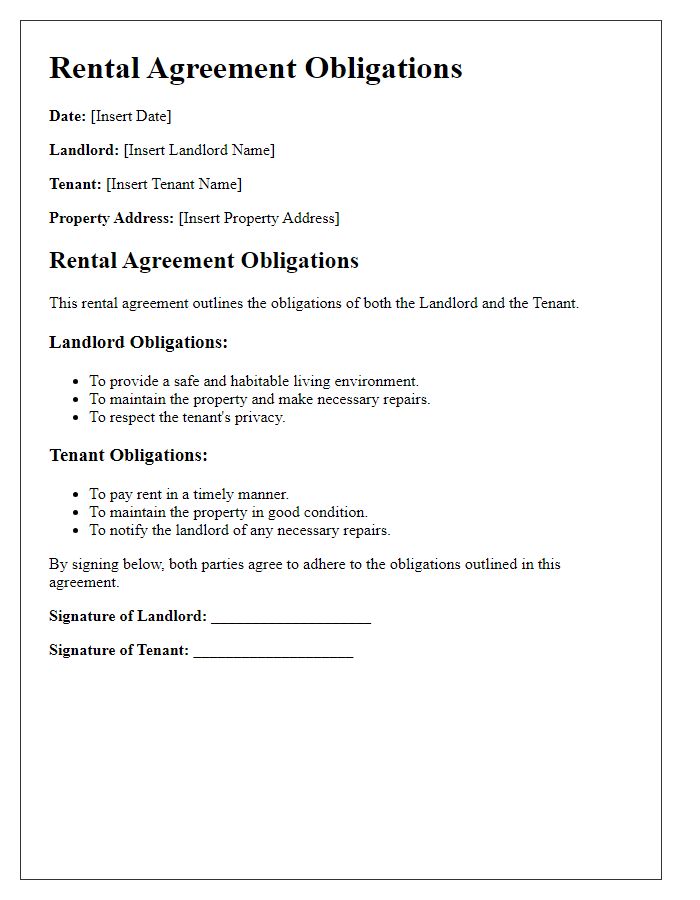


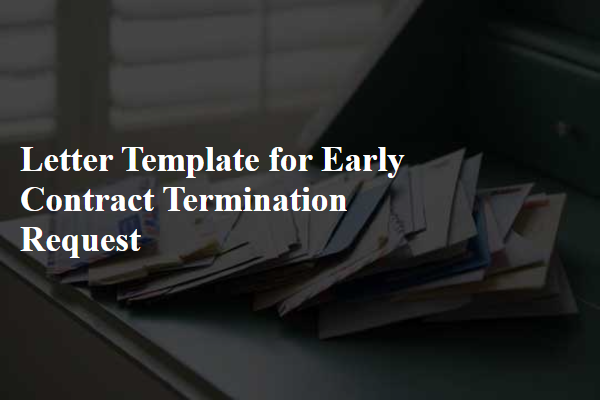

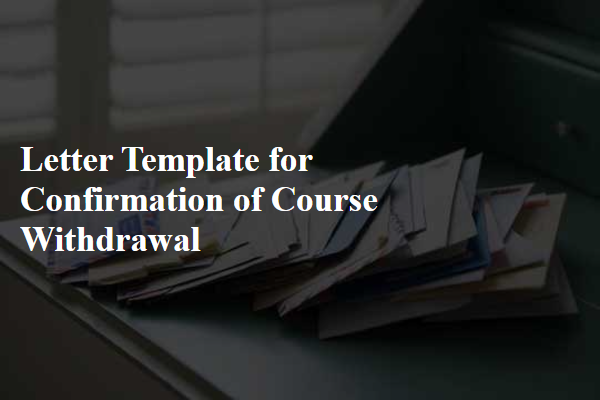
Comments